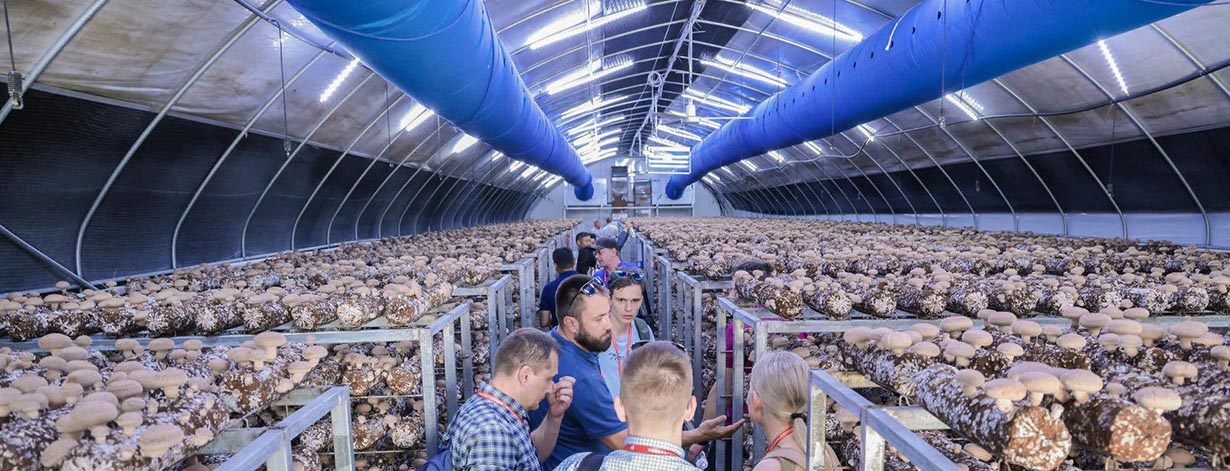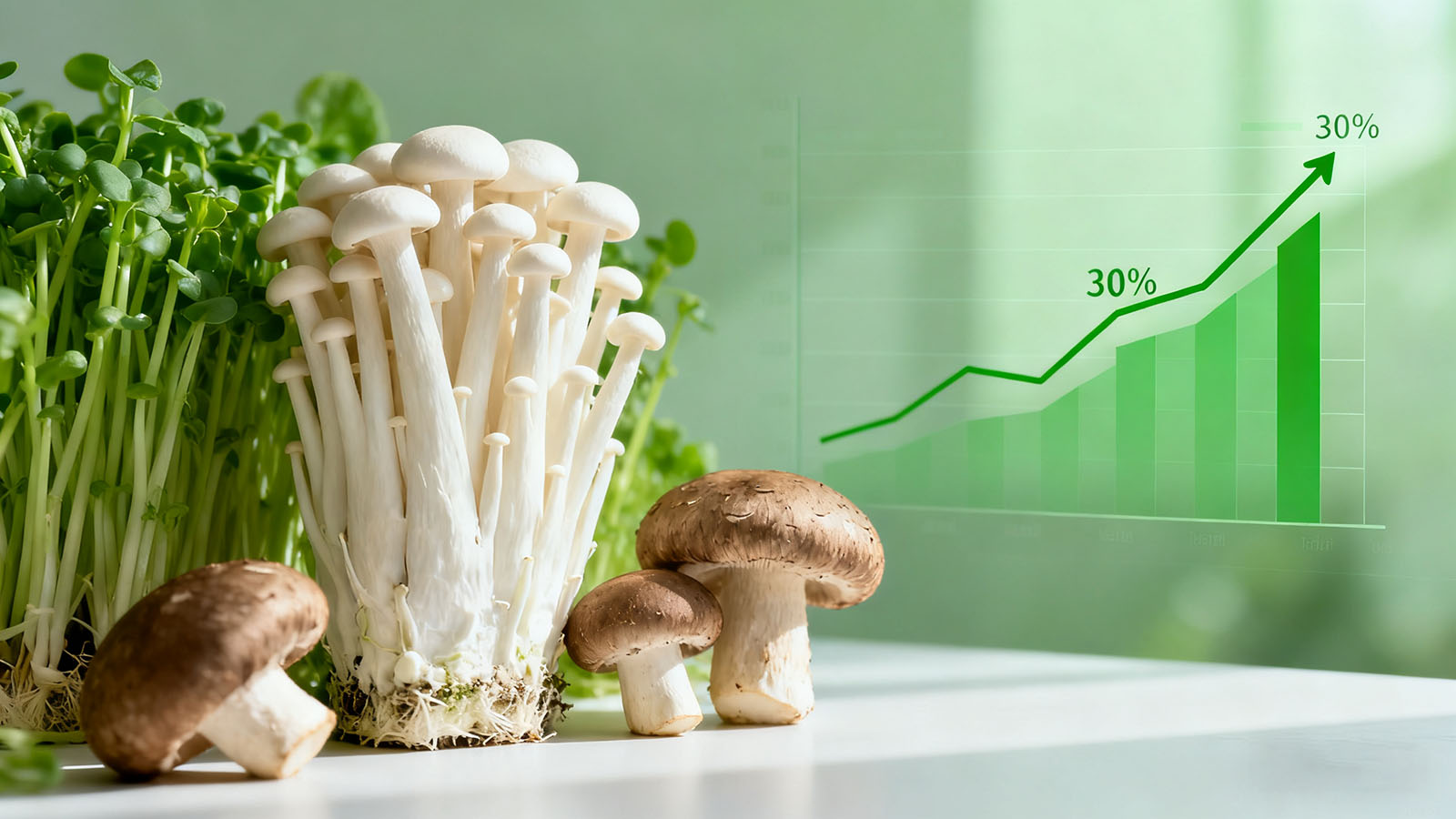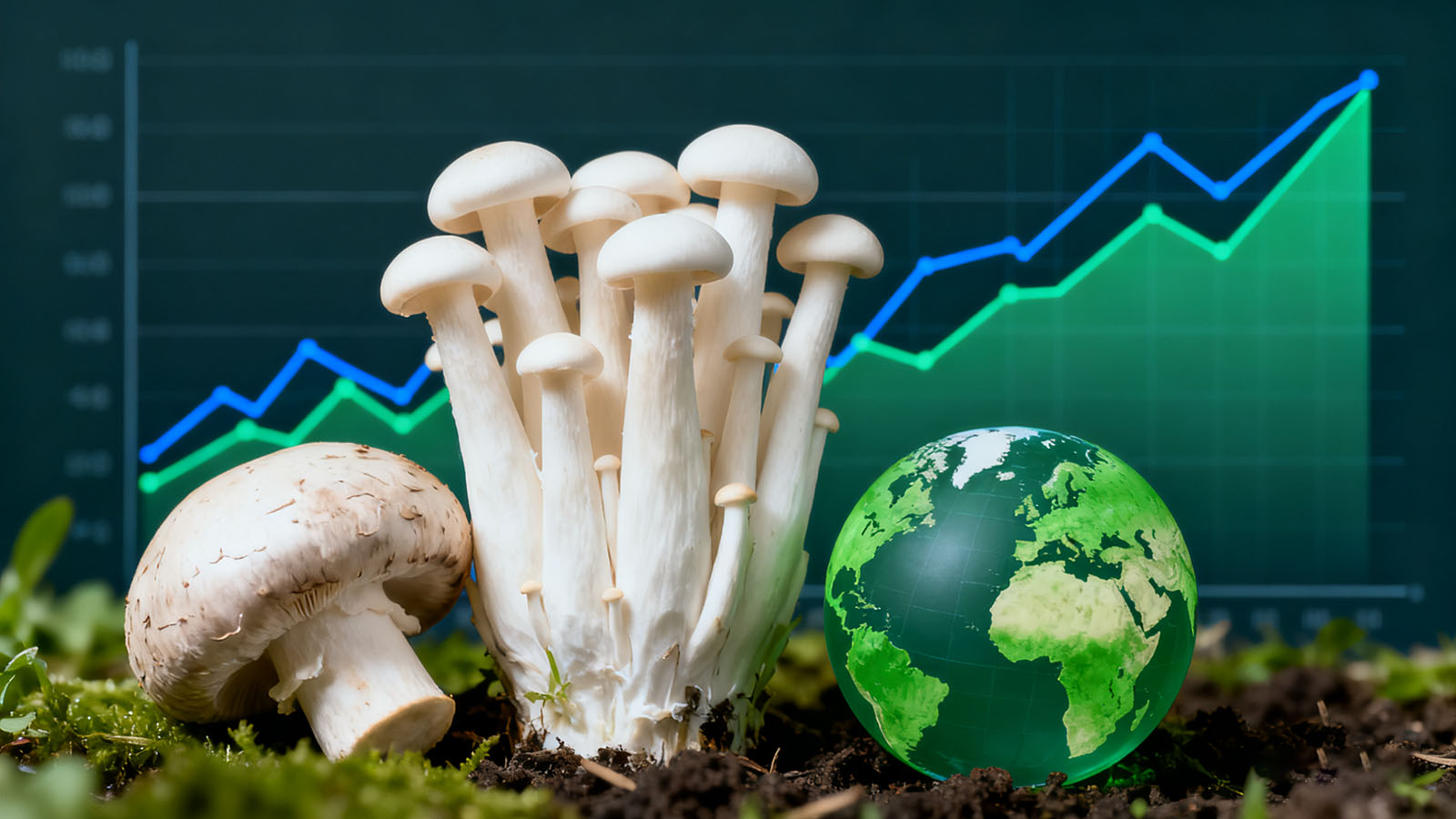
Driven by the global trend of healthy eating and sustainable development, the edible fungi industry is entering a golden period of development. Data shows that the market size will expand at an annual growth rate of 20% over the next five years, and is expected to exceed 100 billion US dollars by 2025. This report provides an in-depth analysis of the three major growth engines, four technological breakthroughs, and five trade opportunities for decision-makers in the industry chain.
I. Three Major Growth EnginesHealth Consumption
As people's attention to health continues to increase, the demand for functional extracts is experiencing explosive growth, with an annual growth rate as high as 35%. For example, polysaccharides and sterols extracted from edible fungi are widely used in health products and pharmaceuticals due to their multiple benefits, such as enhancing immunity and regulating blood lipids, and are highly favored by consumers. At the same time, the market penetration rate of ready-to-eat products has reached 28%, thanks to their convenience, which meets the needs of modern fast-paced life. Moreover, the rise of the plant-based trend has brought new opportunities to the edible fungi industry. As a high-quality source of plant protein, edible fungi can effectively replace some animal protein, satisfying consumers' pursuit of health and environmental protection, and further driving the growth of market demand.
Technological InnovationIn the edible fungi industry, the proportion of factory-based cultivation has exceeded 60%. This model, by simulating natural environments, achieves precise control over conditions such as temperature, humidity, and light, significantly enhancing the stability of yield and quality. The application of intelligent equipment has saved companies over 40% of labor costs. For instance, automated seeding, irrigation, and harvesting equipment not only improve production efficiency but also reduce labor intensity and costs. The development of deep-processing technology has increased the added value of products by 300%, extending the industry chain and enhancing market competitiveness and economic benefits by processing edible fungi into various forms such as dried products, canned goods, and extracts.
Policy SupportThe Chinese government has explicitly proposed supportive policies for the edible fungi seed industry in the "14th Five-Year Plan," including financial support, technology research and development, and talent cultivation, providing strong guarantees for industry development. The European Union has also updated its organic certification standards, further regulating the production and sales of organic edible fungi, which not only helps improve product quality but also enhances consumer trust. Meanwhile, the implementation of the RCEP (Regional Comprehensive Economic Partnership) has reduced trade barriers, promoting the circulation and trade of edible fungi products within the region and creating favorable conditions for the international development of enterprises.
II. Four Technological BreakthroughsIntelligent Planting
Through advanced environmental control systems, precision control of the growing environment within ±0.5% has been achieved, allowing precise adjustment of parameters such as temperature, humidity, and carbon dioxide concentration, providing optimal growing conditions for edible fungi. The introduction of harvesting robot technology has increased harvesting efficiency by 50%, reducing the labor intensity and time cost of manual harvesting. The Internet of Things (IoT) monitoring platform enables real-time monitoring and data analysis of the planting process. Growers can check environmental data and growth conditions anytime and anywhere via mobile phones or computers, and adjust management measures in a timely manner, enhancing the scientific and precise nature of planting.
Deep ProcessingLow-temperature active extraction technology can extract effective components from edible fungi at lower temperatures, maximizing the retention of biological activity and enhancing product efficacy and quality. Microencapsulation technology encapsulates extracts in tiny capsules, achieving freshness locking and controlled release, extending the shelf life of products and facilitating processing and usage. 3D-printed protein products, an emerging technology in recent years, mix edible fungi protein with other ingredients and use 3D printing technology to create foods of various shapes and textures, meeting consumers' demands for personalized and nutritious foods.
Strain ImprovementModern biotechnological methods have shortened the breeding cycle by 60%, significantly accelerating the cultivation speed of high-quality strains. The development of disease-resistant varieties has reduced pesticide use by 70%, lowering pesticide residues and enhancing product safety, which aligns with green and environmentally friendly development requirements. High-quality strains not only increase yield and quality but also enhance the stress resistance of edible fungi, reducing losses caused by pests, diseases, and other natural disasters, providing strong support for the sustainable development of the industry.
Green PackagingMycelium-based biodegradable materials are a new type of eco-friendly packaging material with good biodegradability and renewability, effectively reducing white pollution. Intelligent freshness labels can automatically display the freshness status of products based on the environmental conditions inside the packaging, reminding consumers to consume the products in a timely manner, enhancing the freshness effect and consumer satisfaction. Digital cold chain technology enables full-process monitoring and management of the cold chain logistics, ensuring the quality of edible fungi products remains unaffected during transportation and storage, and increasing the market competitiveness of the products.
III. Five Major Trade OpportunitiesRegional Markets
Southeast Asia: The demand for ready-to-eat products is growing rapidly, with an annual growth rate as high as 80%, providing a broad market space for the export of ready-to-eat edible fungi products.
North America: The import demand for functional extracts is also increasing, with an annual growth rate of 45%. The region has a strong demand for high-quality, high-value-added edible fungi extracts, offering good export opportunities for related enterprises.
Europe: The market has a high recognition of organic products, and the price of organic edible fungi products in Europe can reach more than 120% of that of ordinary products, with a relatively high profit margin. Companies can expand into the European market and increase the added value and market competitiveness of their products by obtaining EU organic certification.
New Infrastructure
Xiamen: As an important edible fungi production base, has established dedicated cold storage facilities, providing strong support for the storage and transportation of products.
China-Europe Edible Fungi Special Train: Has further strengthened the trade of edible fungi between China and Europe, reducing transportation costs and improving efficiency.
Cross-border E-commerce Platforms: Offer companies a broader sales channel, allowing them to sell products directly to global markets, breaking through the time and space limitations of traditional trade and expanding market share.
Certification System
GAP Certification: The addition of 200 GAP (Good Agricultural Practice) certified companies helps improve the overall quality management level of the industry and enhance consumer trust in products.
Halal Certification: Highly recognized in the Middle East. Companies can enter the Middle Eastern market and meet local consumers' demand for halal food by obtaining halal certification.
US FDA Regulations: Companies need to actively respond to ensure their products meet the relevant standards, thereby smoothly entering the US market and expanding their international market share.
IV. 2025 Edible Fungi ExpoExpo Highlights
Global Debut of Innovative Technologies: Over 50 innovative technologies will be showcased, covering multiple fields such as planting, processing, and packaging, providing attendees with an excellent opportunity to understand the cutting-edge technologies in the industry.
High-Quality Suppliers: More than 300 high-quality suppliers will gather at the expo to showcase their latest products and technologies, offering buyers a wide range of choices.
White Paper Release: The Food and Agriculture Organization of the United Nations will release a white paper, conducting an in-depth analysis of the current status and trends of the global edible fungi industry to provide reference for companies' strategic development.
Matchmaking Sessions: The expo will organize matchmaking sessions between over 1,000 international buyers and exhibitors to promote trade cooperation and drive industry development.
Exhibition Areas
Intelligent Planting Area: Will showcase advanced planting equipment and technologies, such as smart greenhouses, automated irrigation systems, and environmental monitoring devices, allowing visitors to understand how to improve planting efficiency and product quality through intelligent means.
Deep Processing Technology Area: Will focus on displaying the deep processing processes and products of edible fungi, such as extracts, health products, and snacks, demonstrating how deep processing technology enhances product added value.
International Trade Area: Will provide companies with the opportunity to interact face-to-face with international buyers, promoting trade cooperation and expanding international markets.
Brand Marketing Area: Will display corporate brand images and marketing strategies, helping companies enhance their brand awareness and market influence.
Benefits of Participating
Import Policy Information: Obtain import policy information from 20 countries, keeping up-to-date with the entry requirements and trade policies of various countries regarding edible fungi products, providing a basis for formulating export strategies.
Connections with Top Buyers: Establish connections with top buyers to secure large purchase orders, increasing market share and sales.
Opportunity for Patent Technology Transfer: Turn innovative technologies into economic benefits.
Participation in Standard-Setting: Enhance influence and say in the industry and promote the standardized development of the industry.
V. Strategic Suggestions for CompaniesTechnology
Intelligent Transformation: Prioritize intelligent transformation by introducing advanced planting equipment and technologies to improve production efficiency and product quality.
Industry-University-Research Platforms: Establish industry-university-research platforms, strengthen cooperation with universities and research institutions, jointly conduct technology research and innovation, and enhance core competitiveness.
Special Subsidies: Actively apply for special subsidies, leveraging government policy support to reduce the costs of technology research and transformation, and accelerate development.
Market
Focus on RCEP Member Countries: Fully utilize the trade facilitation policies brought by RCEP to expand into international markets.
Develop Cross-border E-commerce: Establish own cross-border e-commerce platforms or partner with well-known platforms to bring products to the global market.
Obtain International Certifications: Strive to obtain international certifications, such as EU organic certification and US FDA certification, to enhance the international recognition and market competitiveness of products.
Talent
Cultivate Versatile Technical Teams: Covering multiple fields such as planting, processing, marketing, and management, to meet the needs of diversified corporate development.
Introduce International Marketing Experts: Draw on advanced international marketing concepts and experience to enhance international marketing capabilities.
Cooperate with Think Tanks: Leverage their professional research and analytical capabilities to provide intellectual support for corporate strategic development.




创新博览会LOGO-white.png)


Copyright © China Chamber of Commerce of Food, Native Produce and Animal Products Edible Fungi and Products Branch
京公网安备11010102004652号 京ICP备05021290号-29 | Technical Support: Starify Privacy Policy Sitemap Contact Us
创新博览会LOGO.png)


